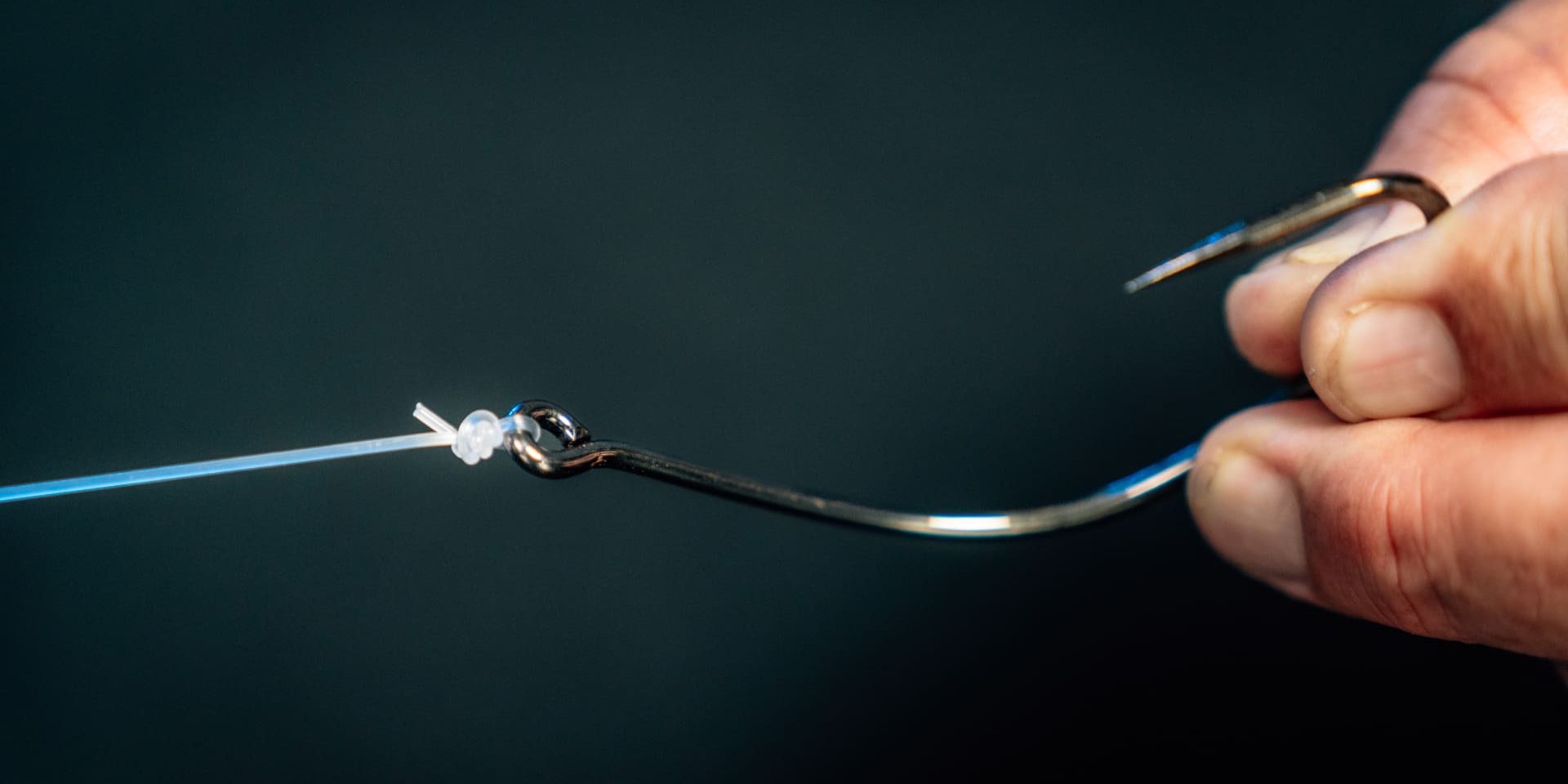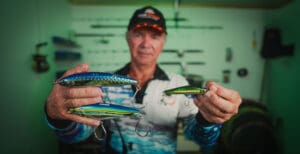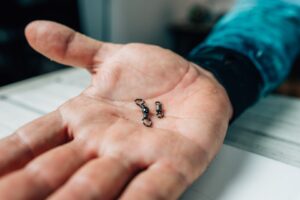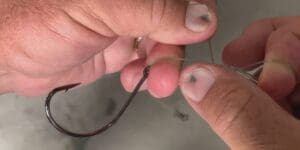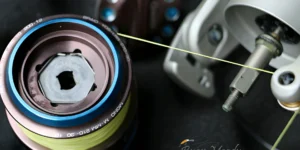When it comes to blood knots used for fishing tackle, knowing which knot to use can make all the difference between landing a big one and losing it at the last second. In this blog, I’ll show you a version of the blood knot that’s perfect for securing hooks, swivels, and more. It’s a unique knot I learned from an old commercial fisherman back in the day (when Moses was a little boy), which is built for serious strength and reliability out on the water. I’d even go so far and call it THE STRONGEST blood knot for fishing.
The Basics of Blood Knots and Their Uses in Fishing
There are several types of blood knots for fishing with unique purposes, each tailored to specific situations. Let’s break down a few popular blood knot types to help you understand where the Double Reversed Locked Blood Knot stands out:
- Half Blood Knot (Clinch Knot):
The half (or standard) blood knot – is great for beginners. It’s used to attach a hook or swivel to a line and provides a good hold, particularly for medium-sized hooks and lines. - Locked Blood Knot:
This knot is simply a locked version of the half blood knot. Known for its strength and straightforward approach, the locked blood knot is ideal for monofilament or fluorocarbon lines, especially heavier (over 50lb) lines. It’s a popular go-to for attaching lures, swivels, or hooks. - Improved Blood Knot:
When you need to connect lines of different diameters, like a tippet to a leader, the improved blood knot comes in handy. This knot is often favored in fly fishing setups. - Double Blood Knot:
Used in scenarios where you’re joining two lines, such as adding a top shot to your reel. Keep in mind, though, this knot is strictly for joining two mono lines and shouldn’t be confused with the Double Reverse Locked Blood Knot we’re discussing here. Learn how to tie the double blood knot (joining mono to mono) HERE!
NOTE: All these knots are for monofilament lines as they slip for braid. You don’t attach hooks to the braid anyway. You always use a monofilament leader as we show here.
Each of the above blood knots has its strengths, but when it comes to fishing with heavy-duty lines or targeting larger fish, the Double Reverse Locked Blood Knot stands in a league of its own. I have used this knot as a fishing guide for 30 years capturing many trophy fish including over 2000 massive metre plus barra, and it has never let me down.
When to Use the Double Reverse Locked Blood Knot
Out of all the blood knots that connect the line to any kind of attachment points, the Double Reverse Locked Blood Knot is my choice for strength and reliability. It’s especially useful for attaching a single line to a fixed point like a hook eye or swivel – essential for strong setups in reef fishing where resistance can snap standard knots. This knot is invaluable in reef fishing, especially when targeting larger species like coral trout and giant trevally. The traditional locked or half blood knots might work for lighter setups, but they can give out under the weight of a big catch. With the Double Reverse Locked Blood Knot, you’re securing your chances to reel in those tougher fish without snapping or slipping.
Get onto big fish faster using your fish finder by using strategies outlined in our free big picture fish finder training. Sign up below.
How to Tie the Double Reversed Locked Blood Knot
- Start with the Eye of the Hook:
Begin by passing the line through the eye of your hook or swivel, leaving a bit of extra line as a tag end (6-8 inches of tag). - Create a Loop Around Your Finger:
Take the tag end and bring it back up to form a loop around your index finger. The line is now doubled. - Wrap the Tag End:
Bring the tag end down and wrap it twice around the doubled lines. This is where the knot’s “reverse” feature comes into play as the line goes back the other way towards the eye of the hook. - Lock the Knot:
To secure the knot, take the tag end and pass it through the loop created at the bottom, then bring it back through the loop at the top around your finger. - Tighten and Test:
Moisten the knot to reduce friction, then pull everything nice and tight. The Double Reverse Locked Blood Knot may look a bit different from other blood knots, but this is exactly why it offers unmatched strength and security.
I’ve also created a video that walks you through the step-by-step process of tying the double reverse-locked blood knot. This video will give you a clear, up-close look at each step, so you can follow along and practice tying this blood knot as you watch. Check it out below:
Common Mistakes to Avoid When Tying A Blood Knot To Fishing Gear
Even with the Double Reverse Locked Blood Knot, it’s essential to get the technique right. Some common mistakes anglers make with blood knots in general include:
- Not moistening before tightening – Always wet your knot before pulling it tight to avoid friction and to ensure the knot can pull to its tightest!
- Incorrect number of wraps – 2-3 is optimum. One wrap weakens the knot and > 3 makes it bulky and harder to tie. Personally, I use two wraps on pretty much all line/leader classes (mostly used on leaders of 40lb and above).
- Trimming too close – Avoid cutting tag ends too short, as you may nick the other parts of the knot and weaken it.
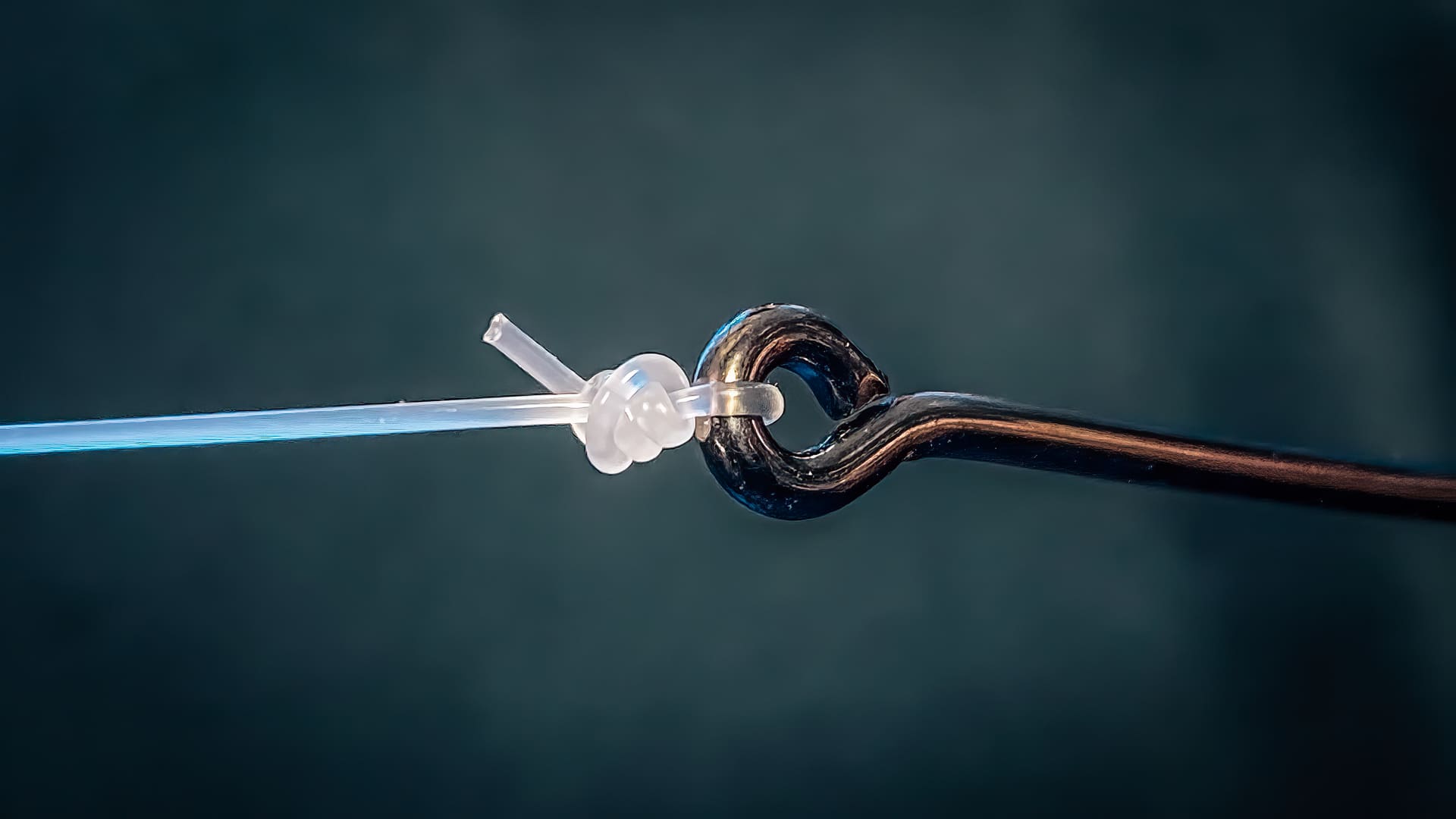
Fishing Knot Strength
The Double Reverse Locked Blood Knot is the strongest and most reliable option for my fishing setup. This blood knot type gives you the confidence to tackle larger fish without worrying about losing your rig. However, a strong knot alone will not prevent you from losing fish as it often comes down to other factors like for example your drag settings. I even prefer lesser strength knots at times as this can be alleviated by setting your drag correctly and maintenance keeping your drag super smooth in favour of a faster tying speed.
I also utilise other ways to tie knots to make it faster. For example the bimini twist is my go to leader knot and I use a special trick to tie it fast.
Learn More Fishing Knots
If you’re eager to discover more reliable fishing knots other than the blood knot, check out the 6 blogs listed below. These are my personal picks for various scenarios, all of which I’ve successfully used throughout my 35+ years as a charter guide.
- Wind on leader system
- Perfection loop vs snap swivel for attaching lures
- Best mono to mono fishing knot
- Easy way to tie a TIGHT FG knot
- Easy alternative to FG knot
- How to tie a dropper (paternoster rig).
For those looking to further improve your fishing skills—whether it’s targeting barra inshore, marlin offshore, or everything in between—I can’t emphasize enough the importance of investing in your knowledge. If you want to catch more fish in less time, make sure to check out my online courses, where I share proven techniques and strategies that can take your fishing game to the next level.
Each course is tied together with a step-by-step framework. Many of our students thought they knew enough, but after doing the course were blown away by the content. See over 800 rave reviews here!
For more free fishing tips straight to your inbox, sign up for our newsletter below.


